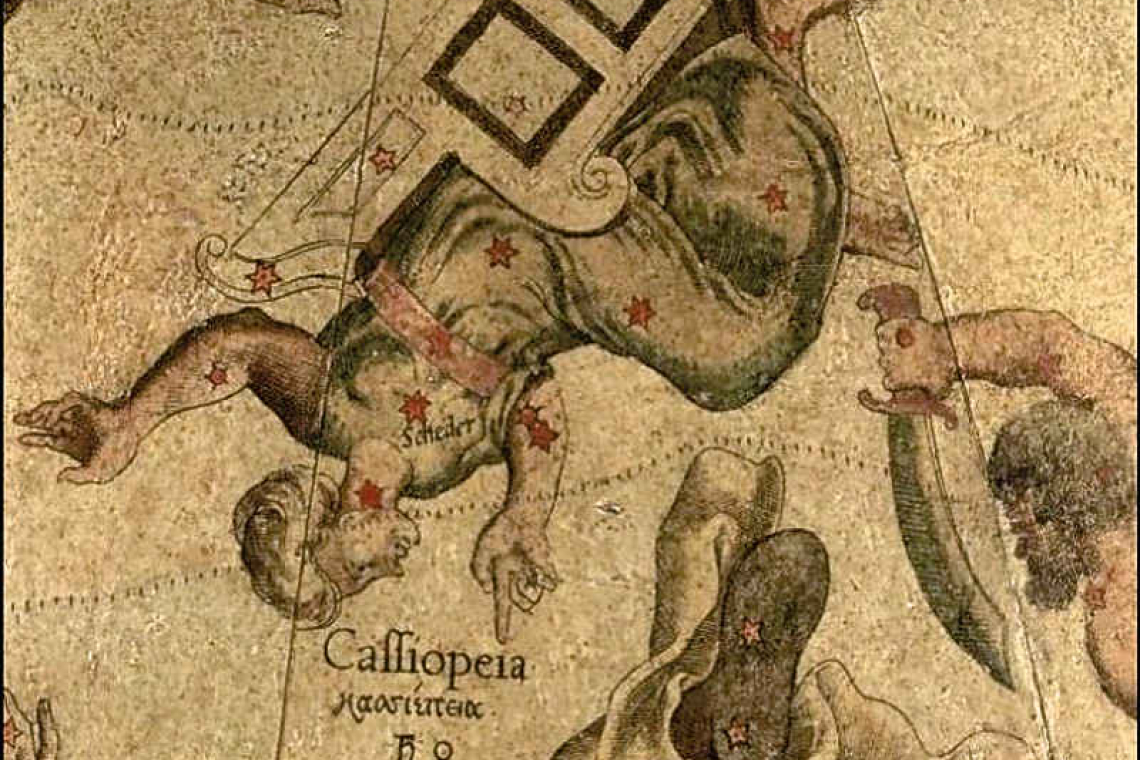~ St. Maarten’s Backyard Astronomy for February 10 - 12 ~
Sun rises at 6:41am
Sun sets at 6:11pm
Lunar phase: 3rd quarter, waning half moon
Moon sets at 10:17am
Moon rises at 11:11pm
This week, The Friendly Island welcomed our King and Queen – so this weekend, let’s find the King and the Queen of the sky. Cephus the King and Cassiopeia the Queen sit on their celestial thrones in the heavens, easily identifiable during the late winter and early spring.
Both these royals are located low in the northern sky. Cassiopeia the Queen is one of the easiest constellations to spot because of her distinctive shape. Depending on how she is oriented in the sky, she looks like the letter W or the letter M or the number 3. These evenings just after sunset, find her just west of due north, setting slowly to the north-northwest horizon.
Cephus the King is near his Queen, as he should be. His constellation is just below Cassiopeia after sunset, look for a square with a triangle connected, pointing right. You can imagine it like a child’s drawing of a house with a roof, but on its side.
Cephus sets about 8:45pm and Cassiopeia sets about two hours later. If you are an early riser, you can catch Cephus rising just east of due north, from about 4:30am until dawn. I guess the Queen sleeps in, at least for this season – in other words, Cassiopeia is not currently visible before dawn.
By the way, Cassiopeia’s constellation features five bright stars, which are sometimes described as outlining the chair – or throne – upon which the queen sits. If you’re viewing Cassiopeia as the letter W; the stars, from left to right, are Segin, Ruchbah, Gamma Cassiopeiae, Schedar and Caph. Try saying that three times fast! Follow a line from Segin to Ruchbah and continue it until you find another celestial royal – Princess Andromeda. This galaxy is a neighbour to our galaxy the Milky Way. Use magnification to find this swirling spiral of stars and dust.
In Greek mythology, Cassiopeia was the beautiful queen of Ethiopia. Perhaps too beautiful, as it is said that she committed the sin of pride, claiming that both she and her daughter Andromeda were more beautiful than the sea nymphs. Her boast angered Poseidon, god of the sea, who sent a sea monster (Cetus the Whale) to ravage the kingdom. To pacify the monster, Cassiopeia’s daughter, Princess Andromeda, was left tied to a rock by the sea. Cetus was about to devour her when Perseus the Hero happened by on Pegasus the Winged Horse. Perseus rescued the princess, and all lived happily ever after.
Thank you for keeping up with the Night Sky articles, backyard astronomy designed for St. Maarten sky viewing. FYI: If you are out later on in the week, note that each star rises about four minutes earlier each day than written here, and the moon rises 50 minutes later. Night Sky is researched and compiled by Lisa Davis-Burnett. Earthsky.org is a key resource for information and images. Questions or comments? Email This email address is being protected from spambots. You need JavaScript enabled to view it.







